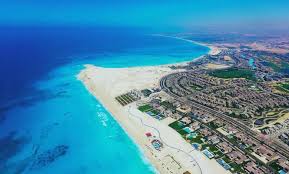
2024 - Massive Projects Redraw the World Map!
we cannot help but pause at the remarkable milestones that humanity has witnessed in this exceptional year. From suspension bridges that connect continents to smart cities that pave the way for a sustainable future, and scientific and technological achievements...
Construct Vision Team
1/1/202517 min read
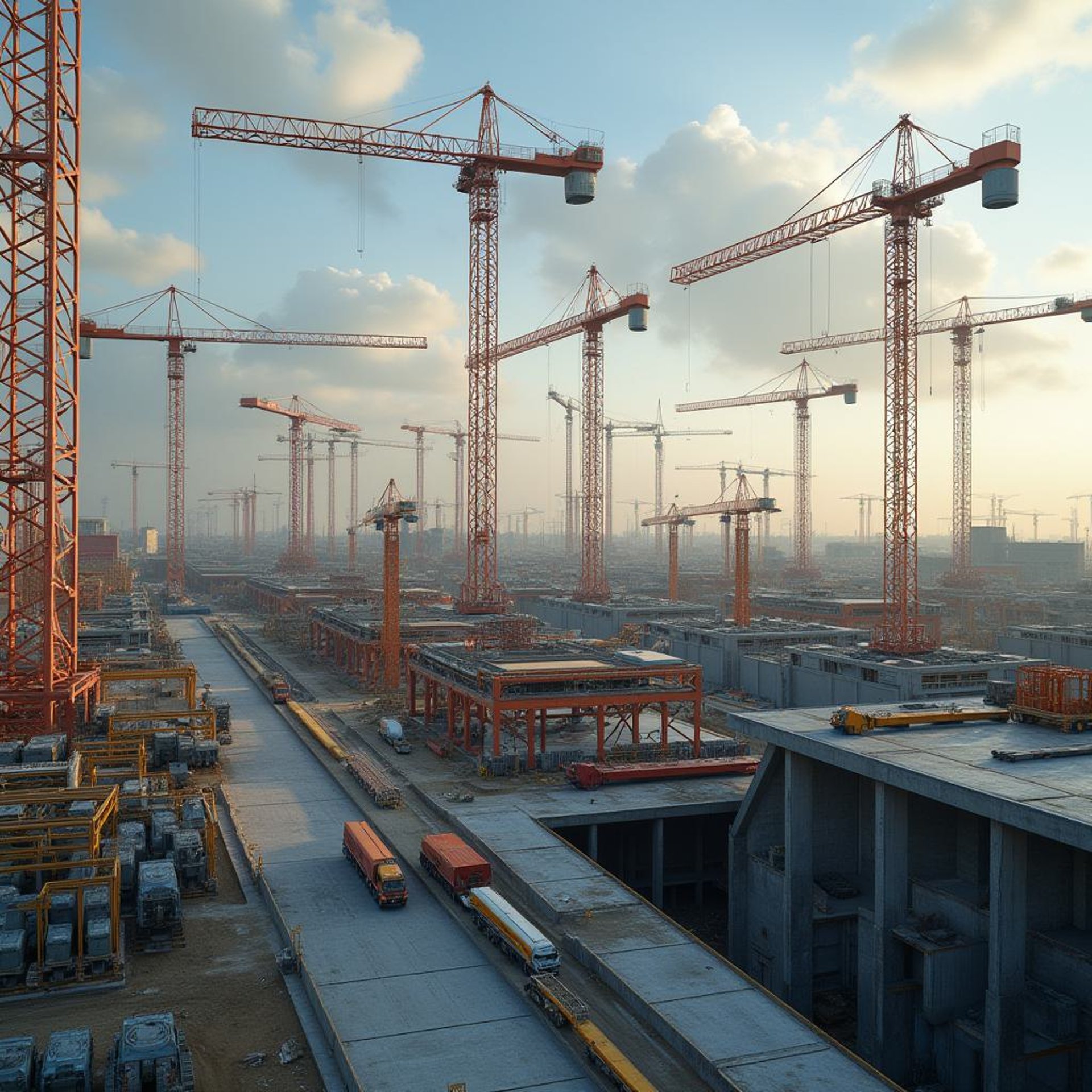
As we turn the pages of 2024, we cannot help but pause at the remarkable milestones that humanity has witnessed in this exceptional year. From suspension bridges that connect continents to smart cities that pave the way for a sustainable future, and scientific and technological achievements...
The year 2024 reflects the spirit of innovation and courage in facing challenges. The world has witnessed a large number of massive projects that have transcended traditional boundaries and achieved qualitative leaps in technology, the environment, and engineering. We have mentioned here some of the leading projects, knowing that there are many other projects that deserve mention as well, but we cannot cover them all in one article.
We will get to know some of the most prominent projects that made this year one of the most inspiring years!"
1-"Major Infrastructure Projects: Building the Future on Solid Foundations
Çanakkale 1915 Bridge (Turkey):
The Çanakkale 1915 Bridge currently holds the title of the longest suspension bridge in the world. This majestic bridge spans the Dardanelles Strait, connecting the continents of Asia and Europe, making it a prominent engineering landmark.
The Çanakkale 1915 Bridge has a total length of approximately 4608 meters, surpassing many other suspension bridges around the world. Its longest span between bridge piers is approximately 2023 meters, which is the reason for its world record. The bridge stretches over an immense distance above the Dardanelles Strait.
The structural design and construction of the bridge utilized the latest technologies, enabling the achievement of this immense length. The bridge serves a strategic purpose, shortening the distance and travel time between the two sides of Turkey, and enhancing the economic development of the region. The Dardanelles Strait is located in a strategic position connecting the Black Sea and the Aegean Sea, making it a vital waterway for trade and transportation. The strait holds significant historical importance, having witnessed numerous wars and battles, and being a strategic location in many civilizations. The bridge is an attractive tourist landmark, representing the latest achievements in civil engineering, and a symbol of technological and engineering progress in Turkey.
Naming Explanation: Although the bridge was built in the 21st century, its name "Çanakkale 1915" carries important historical and symbolic connotations. The number 1915 in the bridge's name refers to the Battle of Gallipoli, which took place in 1915, where the Ottoman forces achieved an important victory over the British and French naval forces. Thus, this number is considered an honor to Turkish military history and a symbol of national pride. It can be said that the purpose of this name is to link the modern bridge to this important historical event, affirming the continuity and development of Turkish civilization. It also enhances national identity and connects citizens to their history, in addition to tourism marketing.
China's Future Train Network:
In 2003, China launched the "High-Speed Rail" project, which aims to build a high-speed rail network connecting major cities in the country. Since then, China has witnessed tremendous development in the field of railways, where thousands of kilometers of high-speed train lines have been built.
China has used artificial intelligence in various aspects of its train network, including control systems, monitoring, and automation. Artificial intelligence has contributed to improving the efficiency of the network, increasing passenger safety, and reducing human errors.
Over time, China has continued to develop and expand its train network, focusing on using the latest technologies, including artificial intelligence, machine learning, and big data. This technology has helped make China's train network one of the most developed and modern railway networks in the world. Its features include:
• Speed: High-speed, capable of reaching speeds of 350 km/h or more. These trains provide fast and reliable trips between major cities in China. And achieved records in travel speed.
• China's train network covers vast areas of the country, connecting cities and different regions. The network provides fast and comfortable transportation options for millions of travelers.
• China's train network uses the latest technologies, including advanced signaling and control systems, advanced safety systems, and driverless trains.
• Focuses on environmental sustainability, using renewable energy and working to reduce carbon emissions.
• These modern trains provide comfortable cabins, various services, and wireless internet networks, making the travel experience comfortable and enjoyable, and increasing the attractiveness of China as an economic and tourist destination.
Today, this network is considered the fastest in the world, reducing travel time between cities by up to 50%. This enhances the local economy and reduces carbon emissions by one million tons per year.
In 2024, the Chinese government allocated a large budget to expand and improve the train network, where billions of dollars were allocated for this purpose. The length of China's train network reached approximately 150,000 kilometers in 2024, making it one of the longest railway networks in the world. Many new lines were opened in the aforementioned year, increasing the ease of access to cities and remote areas. And contributed to enhancing the Chinese economy.
China aims to continue developing and updating its train network, focusing on several objectives, including:
• Expanding the high-speed train network to cover more cities and regions.
• Improving railway infrastructure, increasing its efficiency and reliability.
• Increasing the comfort of travelers by providing better services and a more enjoyable travel experience.
• Connecting China to neighboring countries through regional cooperation projects, such as the Belt and Road Initiative."
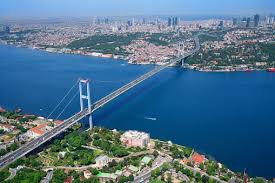

2-"Environmental and Sustainable Projects: Protecting the Planet with Innovative Solutions
"Green City" Project in Singapore:
A sustainable and environmentally friendly city, with a focus on using renewable energy, reducing pollution, and promoting green spaces. Solar energy was used, and innovative waste management techniques were implemented, along with eco-friendly building designs and sustainable transportation.
The Green City contributes to reducing the carbon footprint, improving air quality, enhancing biodiversity, and providing a healthy environment for residents. A large budget was allocated for this project, where the Singaporean government invested billions of dollars in developing the Green City.
It is expected that the Green City will achieve a reduction in carbon emissions by 36% by 2030, an increase in green spaces by 20%, and an improvement in air quality. The project contributes to providing a healthy and clean environment for residents, and reducing reliance on fossil fuels.
Singapore's approach is not limited to greening the city only, but also includes instilling collective awareness of sustainability, revolutionizing the energy sector, stimulating the green economy, and fortifying the nation against the impacts of climate change. Singapore sets global standards for urban sustainability that it adheres to.
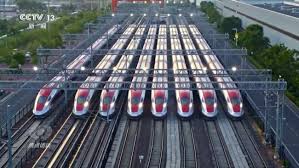

"Floating Solar Energy" Project in the Netherlands:
A great example of innovation and commitment to environmental sustainability. It contributes to reducing the carbon footprint, promoting renewable energy, and improving the quality of life for local communities. The project contributes to reducing reliance on fossil fuels, providing a clean and renewable energy source, and enhancing environmental sustainability. It also provides additional land for agricultural purposes or natural areas.
A large budget was allocated for this project, where the Dutch government invested significant amounts in developing floating solar energy. The aim is to increase renewable energy production by 20% by 2030, and provide additional land areas of up to 10,000 hectares.
The project is located in the Netherlands on Lake "IJsselmeer" in the province of Flevoland. It is an artificial lake in northern Holland, and is the largest lake in Holland.
Lake "IJsselmeer" was chosen as the site for the floating solar energy project due to its vast area, strategic location, and suitability for generating solar energy.
These are just a few examples of the most prominent projects of this year, but the large number of such qualitative projects reflects the global trend towards committing to environmental sustainability, technological innovation, improving the quality of life, and addressing climate change. Large budgets have been allocated for these projects due to their importance and role in achieving sustainable development goals.
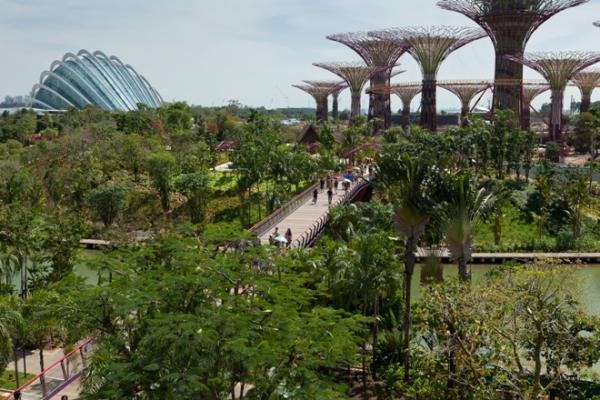

3. Smart Cities and Urban Projects: A Vision for the Future
"The Line" City:
The Line City in the Kingdom of Saudi Arabia aims to reimagine the concept of traditional cities through an innovative futuristic design that focuses on sustainability, technology, and human well-being. The Line is located in the northwest of the Kingdom of Saudi Arabia, near the Red Sea. It connects three continents (Asia, Europe, and Africa), making it a pivotal point for trade and travel.
The Line is a linear city that stretches for 170 kilometers in the northwest of the Kingdom. It is designed to be free of roads and cars, relying on innovative and smart transportation solutions.
The city aims to provide an integrated life experience within a relatively small space compared to traditional cities, while preserving the surrounding environment by 95%.
The Line extends along a straight line, with a total area of 34 square kilometers, a width of only 200 meters, and a height of 500 meters, making it a vertical urban cluster. The city relies on a multi-layered design:
The surface layer is dedicated to pedestrians.
The lower layers contain a smart infrastructure that includes ultra-fast transportation and logistics services.
All facilities and services (such as schools, clinics, and theaters) are distributed in a way that makes them accessible to residents within a 5-minute walk.
The city relies on artificial intelligence to manage all daily operations efficiently. It is equipped with a wide network of sensors that work to improve energy and water consumption and reduce waste. It includes smart systems to recognize individual needs of residents and provide customized solutions.
An underground transportation network with speeds of up to 512 kilometers per hour, allowing travel between any two points in the city in less than 20 minutes.
The city runs entirely on renewable energy (solar energy, wind energy, and green hydrogen), and aims to completely eliminate carbon emissions, making it one of the most sustainable cities in the world. Its design reduces the consumption of agricultural land and limits horizontal expansion, helping to preserve the surrounding environment.
The city accommodates approximately 9 million people, while providing an environment focused on human well-being. It provides modern educational, medical, and recreational services at the highest level. Its design allows residents to easily access all their daily needs, reducing daily stress and increasing productivity.
Construction began in 2021 with the aim of diversifying the Kingdom's economy and reducing reliance on oil. The city is a global center for innovation and technology, attracting global investments and major companies. It provides advanced job opportunities in various sectors such as artificial intelligence, renewable energy, and urban design.
1. A car-free and street-free city, the first of its kind in the world. With an underground high-speed transportation network, the maximum travel time between any two points in the city is 20 minutes.
2. A futuristic and sustainable design aimed at improving the quality of life while preserving the environment. The energy used is 100% renewable.
3. Integration of technology, as the city relies on artificial intelligence and modern technologies.
4. The expected contribution to the gross domestic product by 2030 is up to 180 billion Saudi riyals. The expected job opportunities by 2030 are 380,000 jobs, although the estimated cost of infrastructure may reach 200 billion US dollars.
The hidden marina in The Line City is one of the project's most prominent landmarks. It is characterized by its unique design that makes it a global maritime icon that connects The Line to the nearby islands.
The marina is located within The Line City in the northwest of the Kingdom of Saudi Arabia. It is characterized by a hidden and innovative design, where it was built from top to bottom, aiming to reduce the environmental impact and integrate the facility harmoniously with the surrounding environment. The basin area is 2.6 million square meters. With a width of 1,200 meters, a length of 2,400 meters, and a depth of 15 meters. The marina accommodates approximately 5,000 berths designed to receive tourist ships and global yachts, facilitating movement and enhancing communication between surrounding communities. It also contributes to encouraging and stimulating population growth in the city, serving as a vital hub for neighboring communities. While preserving the surrounding marine environment, including protecting and rehabilitating the coral reefs around it.
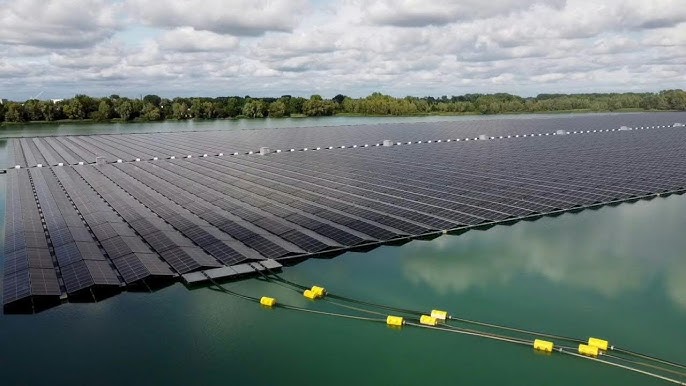

There are many promising experiments in the world regarding smart cities that were accomplished in 2024, we mention some of them as an example:
Smart City Project in Stockholm - Sweden
A sustainable and smart city, where advanced technology and innovative solutions are used to improve the quality of life, enhance environmental sustainability, and improve the efficiency of public services.
This project uses the Internet of Things (IoT) and big data to improve resource management, reduce waste, and enhance energy efficiency. It implements smart transportation solutions, such as electric cars, bicycles, and advanced public transportation systems, reducing reliance on fossil fuels. It focuses on recycling waste, using eco-friendly materials, and promoting the circular economy. In addition to developing renewable energy systems, such as solar energy, wind energy, and geothermal energy, to meet the city's energy needs. It creates large green spaces, public gardens, and natural sites, to enhance biodiversity and improve air quality.
The goals of this smart city include reducing carbon emissions by 50% by 2030, increasing energy efficiency by 20%, and improving the quality of life for residents.
The competition is still ongoing between developed countries to accomplish such qualitative projects, and there is no doubt that we will witness more advanced experiments using the technologies that advance every day in the near future."
4-"Scientific and Technological Achievements: From Earth to Space
Orion Space Station - Our New Window to the Universe
The Orion Space Station was opened in 2024 as an important step to advance scientific and technological progress. It is the first of its kind to allow long-term residence for scientists in Earth's orbit.
The station is characterized by a modern design that allows for long-term residence for astronauts, while providing a safe and healthy environment. It has advanced scientific equipment, laboratories for space experiments and research, and life support systems, communication, energy, and space navigation.
The Orion Space Station (Orion Space Station) is an international joint project, and does not belong to a specific country. It is the result of cooperation between different space agencies around the world, developed through cooperation between the US Space Agency (NASA), the European Space Agency (ESA), and other space agencies from around the world.
The Orion Space Station aims to be an international platform for cooperation in space exploration, conducting scientific research, and enhancing cooperation between countries in this field. It has a ground control center located in the United States of America, which is the main control and monitoring center for the space station.
The control center of the Orion Space Station includes a team of experts, engineers, and scientists who work around the clock to ensure the safety of the station, support astronauts, and manage scientific tasks. It is equipped with the latest technologies and equipment necessary to monitor the station, communicate with it, and provide the necessary support for astronauts.
In addition to the control center in Houston, there are other support centers around the world that contribute to supporting the Orion Space Station. These centers work in coordination with the main control center, and provide logistical and technical support for the space station.
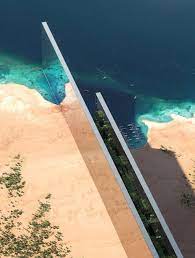

Artificial Intelligence Laboratory in Silicon Valley (AI Lab in Silicon Valley):
The largest artificial intelligence research laboratory in the world was opened, the project aims to develop technologies that change our daily lives, such as self-driving cars and helper robots.
The Artificial Intelligence Laboratory in Silicon Valley is a research and development center specialized in artificial intelligence, located in Silicon Valley, California, United States of America. This laboratory includes a team of experts, scientists, and engineers who work on developing artificial intelligence technologies and their applications in various fields, including healthcare.
Experts, engineers, and scientists in the field of artificial intelligence were gathered to work on innovative projects. The latest technologies, devices, and software were provided to support research.
The focus was on developing artificial intelligence applications in different fields, such as healthcare, education, and industry. This reflects the acceleration of research and development in the field of artificial intelligence, and enhances innovation, contributing to solving global problems, and improving the quality of life.
These projects are considered important achievements in 2024, as they contribute to pushing the boundaries of human knowledge, developing advanced technologies, and enhancing exploration and innovation in the fields of space and artificial intelligence.
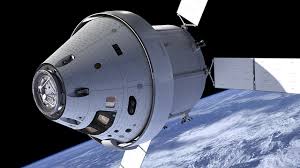

On the occasion of talking about the Artificial Intelligence Laboratory, we mention one of the important projects that the laboratory is working on as an example:
"Artificial Intelligence for Health" Project (AI for Health)
This project is one of the projects that the Artificial Intelligence Laboratory in Silicon Valley is working on. The project aims to develop artificial intelligence technologies and apply them in the field of healthcare, with the aim of improving diagnosis and treatment, and enhancing disease prevention.
The Artificial Intelligence Laboratory in Silicon Valley works on developing artificial intelligence algorithms, machine learning, natural language processing, and other advanced technologies, to apply them in the field of healthcare. To improve the accuracy of diagnosis, accelerate the treatment process, and provide better and more efficient healthcare for patients.
This project is not associated with a specific country, as it represents a global effort in the field of artificial intelligence and healthcare.
Many systems and programs that use artificial intelligence in diagnosing diseases, such as breast cancer, diabetes, and heart diseases, have been developed. Artificial intelligence has contributed to improving the accuracy of diagnosis, reducing medical errors, and saving time and effort for doctors. There are many ongoing research and projects to expand the use of artificial intelligence in healthcare, such as developing virtual assistants for patients, analyzing medical images, and developing smart medical devices.
The project aims to achieve high accuracy in diagnosis and prediction of diseases, the ability to analyze large amounts of medical data quickly and accurately, and assist in making the right medical decisions, and improve the quality of healthcare.
Therefore, it is one of the important projects in which artificial intelligence contributes to improving human health, and providing better and more efficient healthcare.
5. Cultural and Artistic Projects: Beauty Meets Innovation
The Future Museum in Dubai:
One of the important cultural and artistic projects that was opened in 2024. Here are some details about this museum:
The Future Museum in Dubai is now one of the most prominent modern architectural landmarks in the world. It is not just a museum for display, but a future destination aimed at exploring innovations and emerging technologies that will shape our lives in the future.
The building takes on a distinctive oval shape covered with a complex glass facade consisting of 1024 three-dimensional glass panels. This facade is not just a decoration, but an interactive artwork that displays Arabic poems specific to the UAE.
Inside the museum, the visitor goes on an exploratory journey through the different fields that will shape our future, such as:
• Artificial Intelligence: Visitors can interact with intelligent robots and experience virtual reality technologies.
• 3D Printing: Complex 3D models are displayed along with their applications in different fields.
• Environment: Innovative solutions are displayed to address environmental challenges.
• Space: The possibilities of space exploration and the development of human colonies outside the Earth are displayed.
The museum displays a variety of technological innovations, artificial intelligence, robots, virtual reality, and other advanced technologies, and organizes cultural events, seminars, and workshops, to discuss the future of science and technology, and its impact on society.
The Future Museum in Dubai contributes to enhancing awareness of the future, innovation, and technology, and its role in shaping our world. It provides a platform for learning and discovery, where visitors can explore the latest innovations, and learn about the future of science and technology. It combines art, science, and technology to create a unique cultural experience that enhances creativity, future thinking, and awareness of technological developments.
The opening of the Future Museum in Dubai in 2024 represents an important achievement in the field of culture and arts, and reflects Dubai's vision to become a global center for innovation and technological advancement.
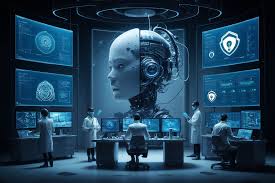

Secret Garden Museum :
An innovative art museum that combines art and nature, and displays artworks inspired by nature and the environment.
The museum combines a unique design that integrates buildings and gardens, and employs the place to display artworks in natural green spaces, such as sculpture, photography, and painting, which reflect the beauty of nature. It organizes cultural events, workshops, and artistic performances, to enhance interaction between visitors and artists.
The Secret Garden Museum is located in the city of New York, United States of America. The exact budget of the museum has not been announced, but it is expected to be a large budget due to its innovative and unique design.
The museum extends over a wide area of natural gardens, and includes indoor and outdoor spaces for displaying artworks. The museum provides a comprehensive artistic experience, where visitors can enjoy art in a beautiful natural environment. It also offers services such as guided tours, art workshops, cultural events, and musical performances.
It is expected that the museum will attract a large number of visitors interested in art and nature.
These projects will play a major role in raising environmental awareness, enhancing artistic appreciation, and encouraging creativity. It creates a rich cultural experience, combining art and nature, which enhances interest in the environment and its preservation.
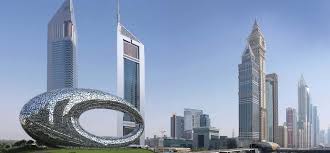

"Projects on the Way to Appearing in the Near Future:
World Peace Bridge - A New Link Between Continents:
The "World Peace Bridge" is an ambitious project aimed at building a bridge that connects two or more continents, and promotes peace and understanding among people. By constructing a massive suspension bridge that spans a long distance, it will serve as a symbol of unity and world peace, and enhance communication and cooperation between countries and peoples.
The World Peace Bridge project aims to encourage dialogue and understanding between different cultures, and facilitate the movement of people and goods between countries. It also aims to be a prominent engineering landmark and an attractive tourist destination.
This project has not been implemented yet, but it remains an interesting idea with great symbolic dimensions. Different sites have been proposed for building this bridge, such as connecting the continents of Asia and Europe, or connecting the continents of Asia and Africa. The project will extend between two main points on two continents, such as a bridge between Turkey and Greece across the Aegean Sea, or between North Africa and South Europe across the Strait of Gibraltar, to connect major commercial and cultural centers.
Although this project has not become a tangible reality yet, it represents an ambitious vision for peace and international cooperation, making it a future project of great importance.
Ras Al-Hikma Project in Egypt
A massive development project in the Ras Al-Hikma area, which includes a global infrastructure to achieve excellence and well-being.
This project reflects an ambitious vision to develop a vital area with advanced resources, which places Egypt on the map of global development projects.
The Ras Al-Hikma Project is a large tourism and development project located on the Red Sea coast in Egypt. The project aims to develop a promising tourist area that enhances Egypt's position as an investment and tourism hub, improves infrastructure, and raises the level of local services. This contributes to improving the quality of life for local residents, creating new job opportunities, and significantly supporting the local economy. It also aims to preserve the environment, apply sustainability standards, and provide a healthy residential environment for citizens.
The project includes an integrated tourist resort, a residential city, and an industrial area, combining tourism, housing, and industry, which contributes to achieving comprehensive and sustainable development in the region.
Some works and stages have been implemented in the project. Construction and construction work has begun, and some important stages have been completed, such as establishing basic infrastructure, such as roads, water networks, sewage, electricity, and communications, and some tourist facilities, such as hotels, hotel apartments, and some service facilities, such as schools, hospitals, and shopping centers, and a section of the residential project.
There is still a lot of work to be done to complete the project in its entirety. It is expected that work on the project will continue for years to come, with continued development and construction.
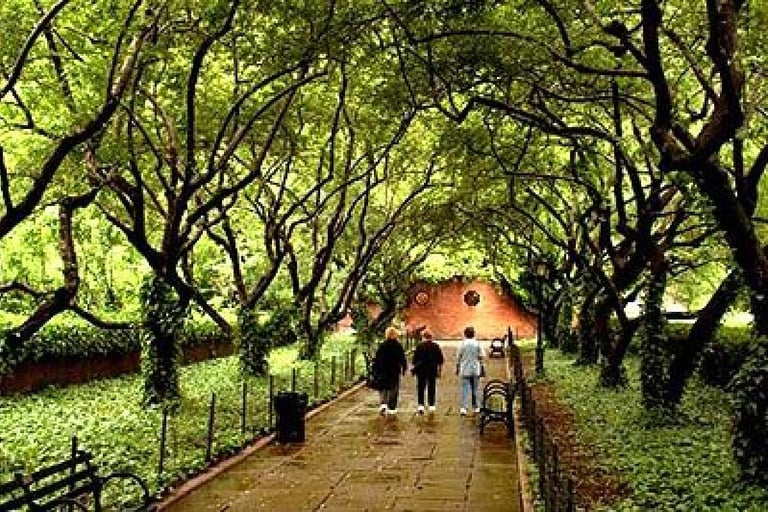

Future Tower in South Korea
A 700-meter-high tower in Seoul, the capital, which includes inside it smart technologies that manage energy consumption, cooling, and lighting automatically. The tower produces its own energy by 100%.
The Future Tower is an ambitious and innovative project, but it has not been opened yet. This project is still in the planning and design stage, and it is expected to be built in the near future.
The goal of the project is to create a sustainable and environmentally friendly residential tower. It is characterized by its innovative design that combines advanced technology and environmental solutions. By using environmentally friendly building materials, such as green concrete, insulated glass, and recyclable materials. Relying on renewable energy, such as solar energy, wind energy, and geothermal energy, to provide the energy needed for the tower. Applying innovative waste management techniques, recycling water, and providing natural ventilation and cooling systems. Using smart systems to control energy, monitor air quality, and provide advanced digital services.
The Future Tower in South Korea is considered a model for sustainable and future buildings, and it is expected to be an architectural landmark in South Korea upon its completion. Because it represents an ambitious vision for the future, and embodies the commitment to environmental sustainability and technological innovation.
A Vision for the Future
With the end of 2024, we can say with confidence that this year was a witness to limitless ambition, determination to build a better future, and a testament to the ability of humans to achieve the impossible. These projects are not the end of the journey, but the beginning of a new era of innovation and sustainability.
But the question remains: What will 2025 bring? And how can any of us be part of this inspiring story? Share your thoughts and expectations with us!
What project impressed you the most? Tell us in the comments!
Thank you
Construct Vision Team

